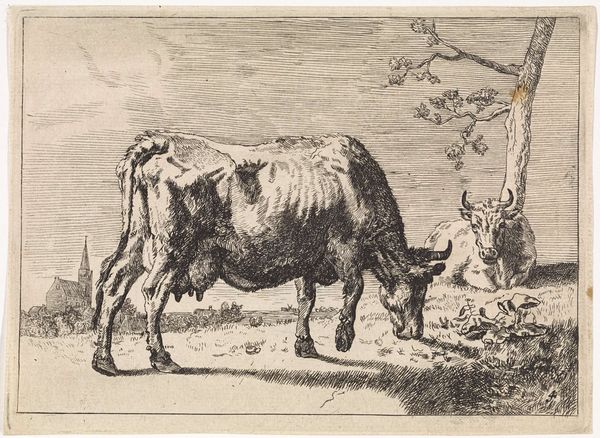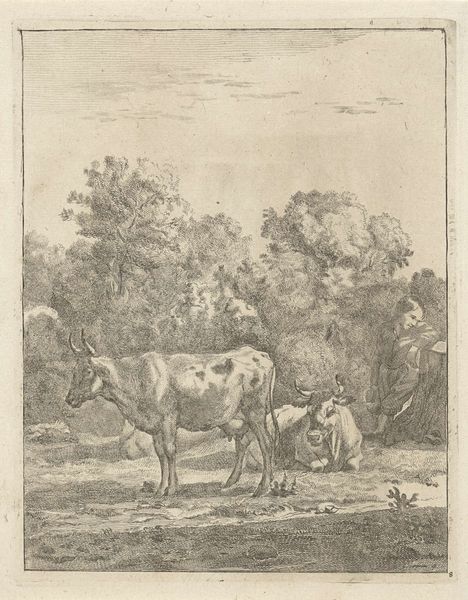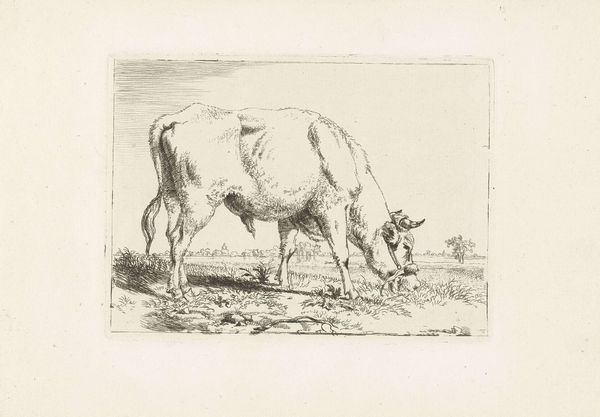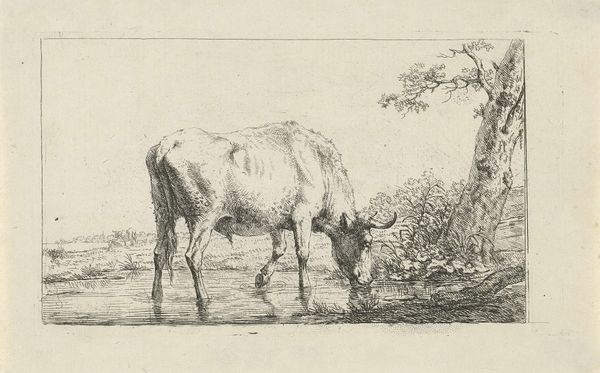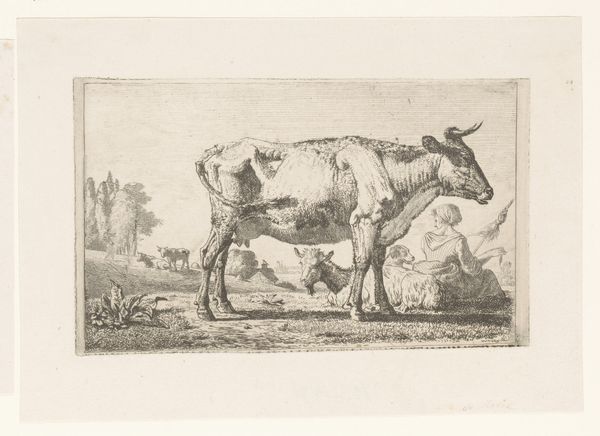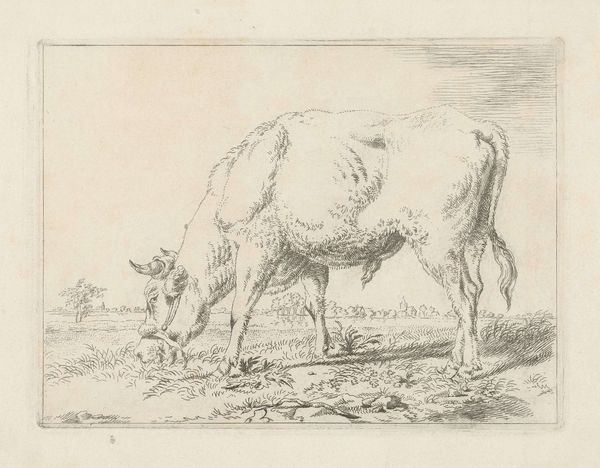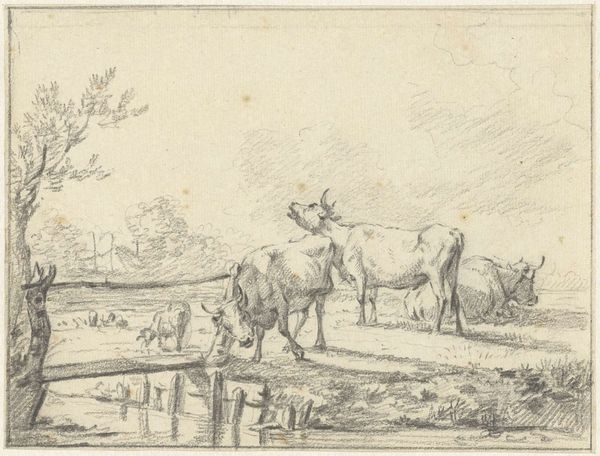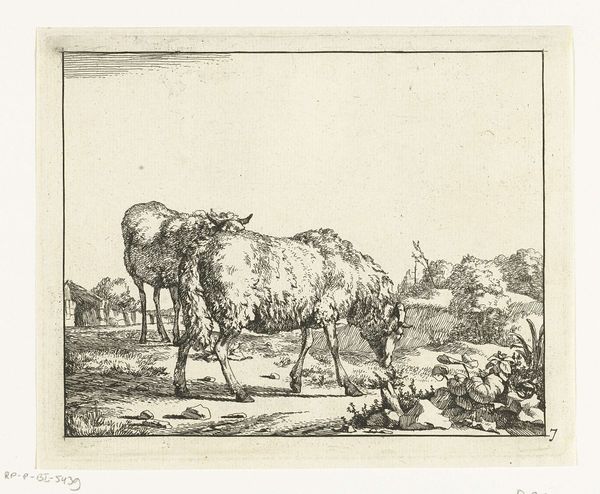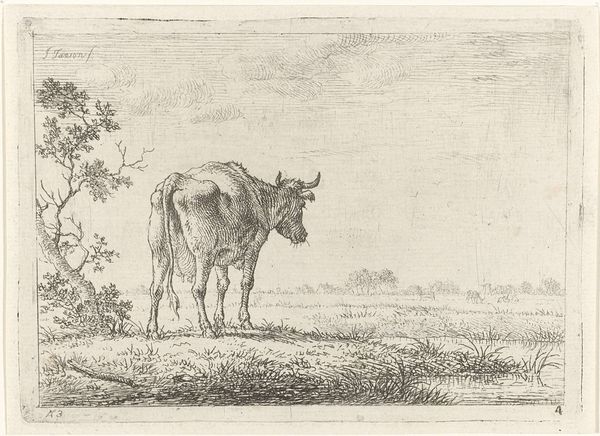
print, etching
#
animal
#
dutch-golden-age
# print
#
etching
#
landscape
#
realism
Dimensions: height 165 mm, width 233 mm
Copyright: Rijks Museum: Open Domain
Editor: Here we have Pieter Gerardus van Os’s 1812 etching, "A Donkey and Two Goats." The printwork is incredibly detailed. I'm curious about the story behind this piece, it feels quite unassuming. What do you see in it? Curator: It's tempting to simply appreciate the surface-level realism of van Os’s piece. But consider the materiality of this print. Etching, as a reproducible medium, made images like this more accessible, potentially circulating within a burgeoning commercial market. These animals are depicted not just as figures in a landscape, but almost as commodities themselves. Do you see how van Os is detailing the donkey's pack? Editor: I see the pack. And I didn’t think of the animals being commodities themselves, but that makes sense with it being reproducible. Curator: Exactly! Think about 1812: the Dutch economy, shifting agricultural practices. Etchings like this may have served a function beyond mere decoration. What might this imagery say about labor, rural life, and emerging capitalist values at the time? Editor: I suppose it does capture a sort of…everyday labor? The donkey with its pack. Maybe there's a commentary there about the changing roles of animals in agricultural production. It is subtle though. Curator: And think of the artistic labor itself! Van Os meticulously created this image, which would then be reproduced and distributed. We should consider his skill, labor and artistic choices in the context of his own socio-economic reality as an artist. Does it shift your perception of the landscape? Editor: Definitely. I was focused on the animals, but seeing it as part of a bigger material process makes it more interesting, and opens up questions about its audience, too. Thanks for making me consider more than just what's on the surface. Curator: It is crucial to appreciate art not just for what it depicts, but also the conditions of its creation, and its life beyond the artist’s studio. Food for thought!
Comments
No comments
Be the first to comment and join the conversation on the ultimate creative platform.

